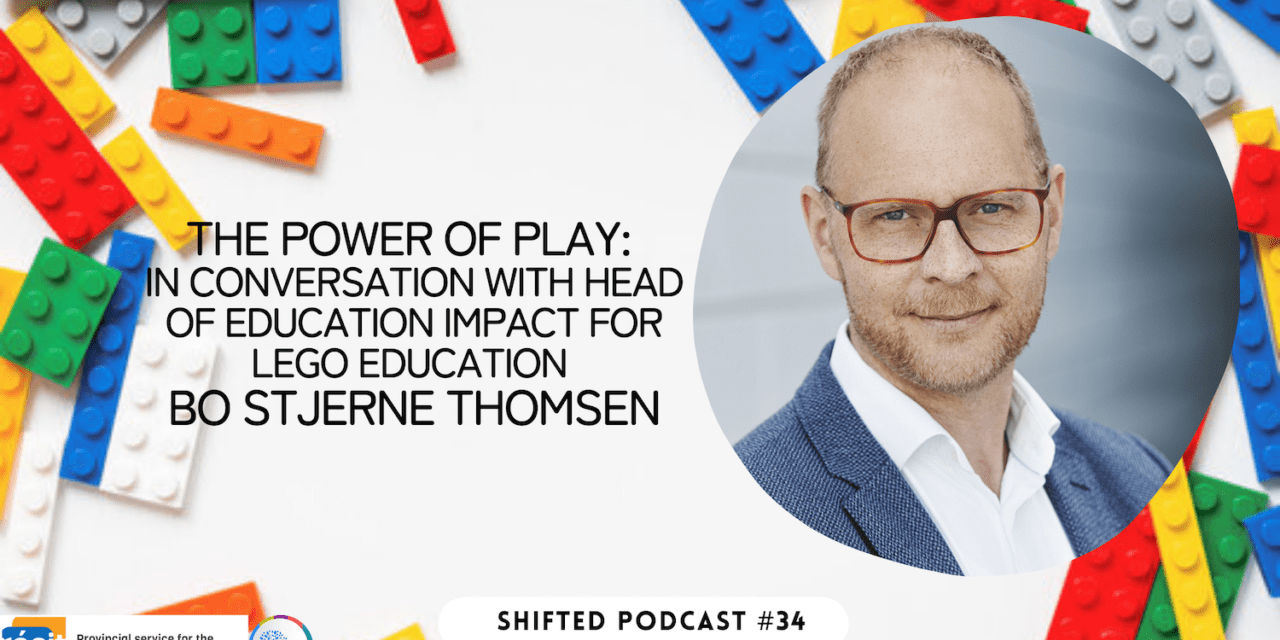Playful Learning: Bo’s Journey into Lego Education
In the latest episode of ShiftED Podcast, host Chris sits down with Bo Stjerne Thomsen, Vice President and Chair of Learning through Play at the LEGO Foundation, to explore how playful learning can transform education. Bo shares his unique insights on how integrating creativity and play into learning environments can enhance student engagement and development. Tune in or read more below to discover why playful learning is more than just fun—it’s a powerful approach to education.
A Blend of Design, Technology, and Childlike Wonder
Bo Stjerne Thomsen, a seasoned educator with a background in design, architecture, and technology, has dedicated over 15 years to exploring the intersection of play and education. His journey into Lego Education was inspired by a deep-rooted belief in the power of play to foster creativity, critical thinking, and a lifelong love of learning.
The Importance of Playful Exploration
Bo’s childhood, spent exploring the outdoors and indulging in imaginative play, laid the foundation for his understanding of play’s role in development. He recalls the freedom and joy he experienced as a child, and how these experiences shaped his perspective on learning.
However, Bo acknowledges that children’s play has evolved significantly in recent years. With the rise of digital technology, there has been a shift away from physical exploration and towards screen-based activities. He emphasizes the importance of balancing both physical and digital play environments to ensure holistic development.
Lego Education: Guided Play for Effective Learning
Lego Education defines play as an active, exploratory, and meaningful process that involves guided exploration. This approach allows children to explore, create, and engage while aligning with educator objectives. Bo highlights the key characteristics of effective play for learning:
- Active engagement: Students are physically and mentally involved in the learning process.
- Meaningfulness: The learning experience is relevant and engaging to the student.
- Iteration and testing: Students can experiment, make mistakes, and learn from their experiences.
These elements are essential throughout various stages of education, from early childhood to higher education.
Digital Tools and Hands-On Learning
Bo discusses the role of digital tools like Minecraft, Scratch, and Lego Mindstorms in higher education. While these tools can enhance learning experiences, he emphasizes the importance of maintaining the core principles of playfulness and agency.
He also notes a shift in Lego Education with the introduction of products like Spike, which offer a more guided and structured approach while still allowing for open-ended creativity and exploration.
Supporting Teachers in Hands-On Learning
Bo provides insights on how to help teachers integrate hands-on learning approaches into their classrooms. Key strategies include:
- Professional development: Providing teachers with training and resources to support their implementation of hands-on learning.
- Minimizing preparation time: Offering ready-to-use materials and lesson plans to reduce teachers’ workload.
- Encouraging risk-taking: Creating a supportive environment where teachers feel comfortable experimenting with new approaches.
Hands-on, play-centered learning can help address issues of disengagement among students and rekindle their joy and enthusiasm for learning.
AI and the Future of Education
Bo addresses the emerging presence of AI in education, highlighting the need for responsible innovation. While AI can offer valuable tools and resources, he emphasizes that hands-on learning will remain essential, as it cannot replicate the human experience of learning.





